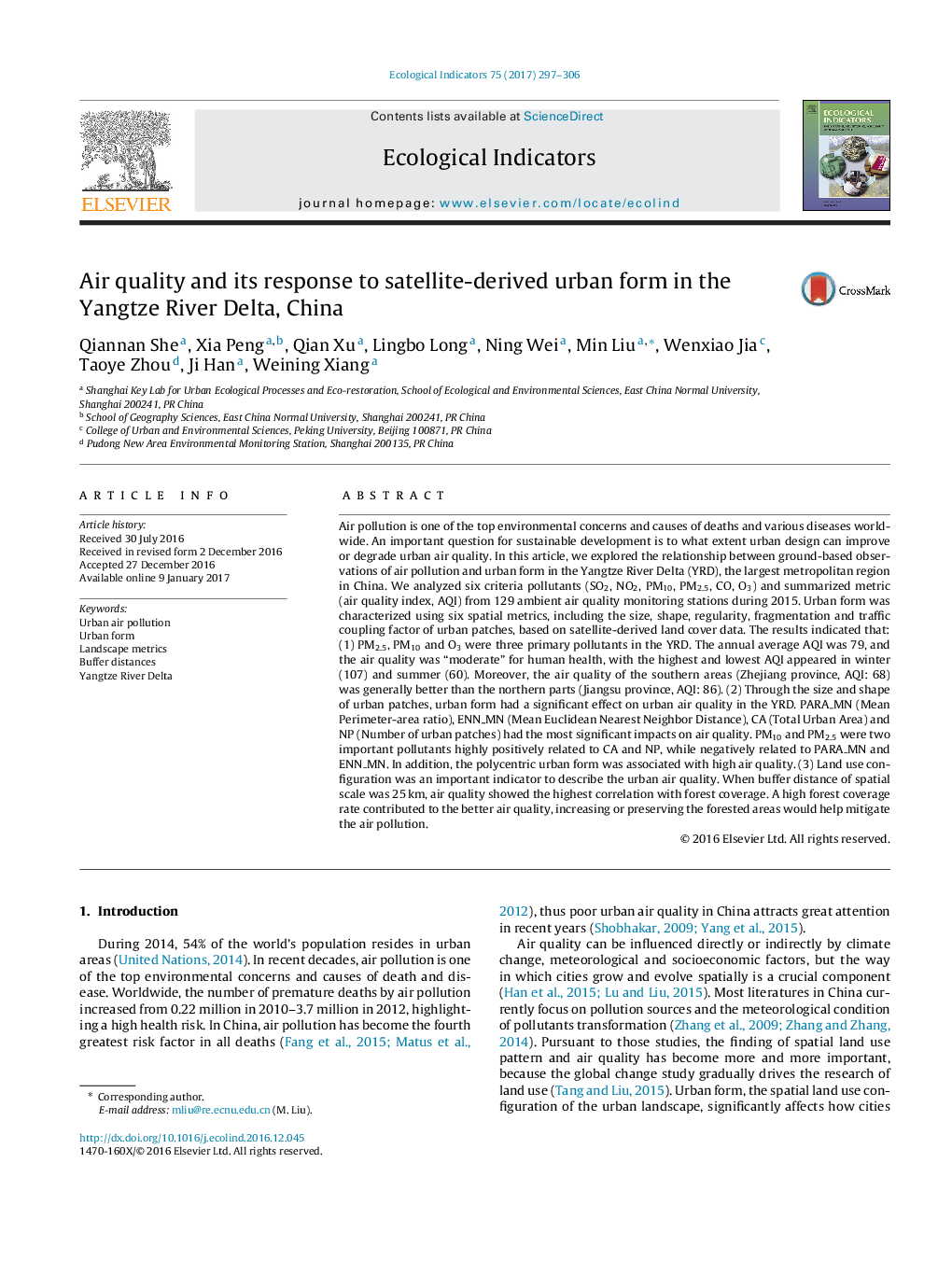| کد مقاله | کد نشریه | سال انتشار | مقاله انگلیسی | نسخه تمام متن |
|---|---|---|---|---|
| 5741821 | 1617127 | 2017 | 10 صفحه PDF | دانلود رایگان |
- Ground observations of air pollutants over Yangtze River Delta (YRD) is analyzed.
- Satellite-based urban form is characterized by six landscape metrics.
- The air quality in YRD is “moderate” for human health.
- Polycentric urban form is associated with high air quality.
- Increasing or preserving the forested areas helps mitigate the air pollutants.
Air pollution is one of the top environmental concerns and causes of deaths and various diseases worldwide. An important question for sustainable development is to what extent urban design can improve or degrade urban air quality. In this article, we explored the relationship between ground-based observations of air pollution and urban form in the Yangtze River Delta (YRD), the largest metropolitan region in China. We analyzed six criteria pollutants (SO2, NO2, PM10, PM2.5, CO, O3) and summarized metric (air quality index, AQI) from 129 ambient air quality monitoring stations during 2015. Urban form was characterized using six spatial metrics, including the size, shape, regularity, fragmentation and traffic coupling factor of urban patches, based on satellite-derived land cover data. The results indicated that: (1) PM2.5, PM10 and O3 were three primary pollutants in the YRD. The annual average AQI was 79, and the air quality was “moderate” for human health, with the highest and lowest AQI appeared in winter (107) and summer (60). Moreover, the air quality of the southern areas (Zhejiang province, AQI: 68) was generally better than the northern parts (Jiangsu province, AQI: 86). (2) Through the size and shape of urban patches, urban form had a significant effect on urban air quality in the YRD. PARA_MN (Mean Perimeter-area ratio), ENN_MN (Mean Euclidean Nearest Neighbor Distance), CA (Total Urban Area) and NP (Number of urban patches) had the most significant impacts on air quality. PM10 and PM2.5 were two important pollutants highly positively related to CA and NP, while negatively related to PARA_MN and ENN_MN. In addition, the polycentric urban form was associated with high air quality. (3) Land use configuration was an important indicator to describe the urban air quality. When buffer distance of spatial scale was 25Â km, air quality showed the highest correlation with forest coverage. A high forest coverage rate contributed to the better air quality, increasing or preserving the forested areas would help mitigate the air pollution.
Journal: Ecological Indicators - Volume 75, April 2017, Pages 297-306
